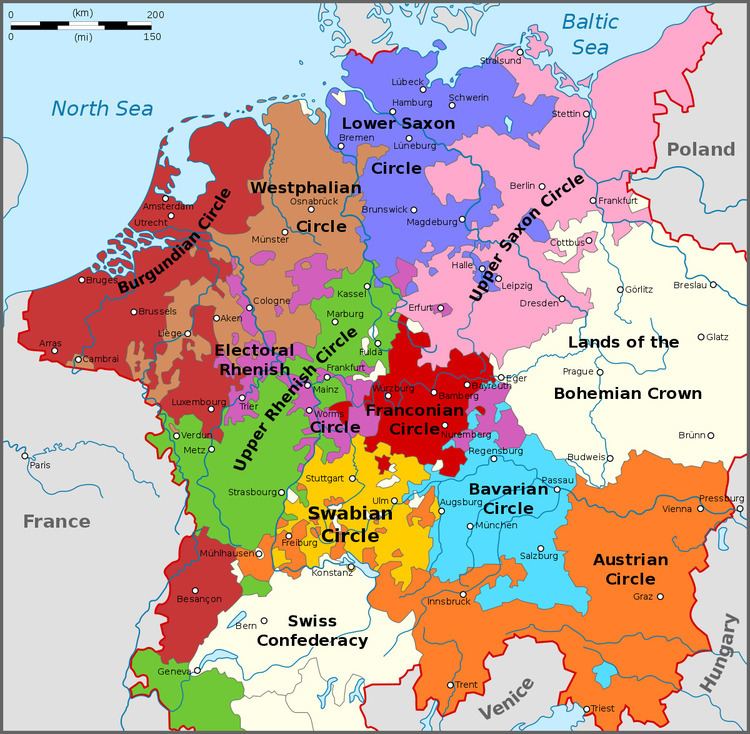 | ||
During the Early Modern period the Holy Roman Empire was divided into Imperial Circles (Latin: Circuli imperii, German: Reichskreise; singular Circulus imperii, Reichskreis), administrative groupings whose primary purposes were the organization of common defensive structure and the collection of imperial taxes, but were also used as a means of organization within the Imperial Diet and the Imperial Chamber Court. Each circle had a Circle Diet, although not every member of the Circle Diet would hold membership of the Imperial Diet as well.
Contents
Six Imperial Circles were introduced at the Diet of Augsburg in 1500. In 1512, three more circles were added, and the large Saxon Circle was split into two, so that from 1512 until the collapse of the Holy Roman Empire in the Napoleonic era, there were ten Imperial Circles. The Crown of Bohemia, the Swiss Confederacy and Italy remained unencircled, as did various minor territories which held imperial immediacy.
Formation
Initially the 1500 Diet of Augsburg set up six Imperial Circles as part of the Imperial Reform:
Originally, the territories held by the Habsburg dynasty and the Electors remained unencircled. In 1512 the Diet at Trier and Cologne organized these lands into three more circles:
Also, the Saxon circle got divided into:
In view of French claims raised to Maximilian's Burgundian heritage, the 1512 Diet initiated the official use of the name Holy Roman Empire of (the) German Nation (Latin: Sacrum Imperium Romanum Nationis Germanicæ) in its Final Act.
Though the Empire lost several western territories after the secession of the Seven United Netherlands in 1581 and during the French annexations of the 1679 Peace of Nijmegen, the ten circles remained largely unchanged until the early 1790s, when the French Revolutionary Wars brought about significant changes to the political map of Europe.
Unencircled territories
A number of imperial territories remained unencircled, notably the lands of the Bohemian crown, the Old Swiss Confederacy and the Italian territories. Besides these, there were also a considerable number of minor territories which retained imperial immediacy, such as individual Imperial Villages, and the lands held by individual Imperial Knights.
Literature
Contemporary (1500–1806) literature and source material:
